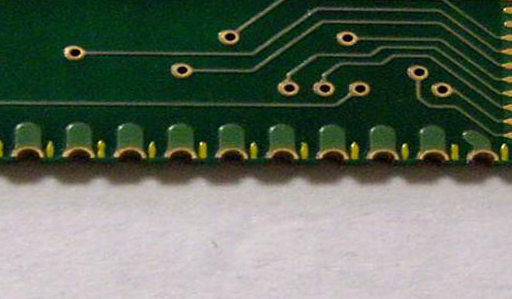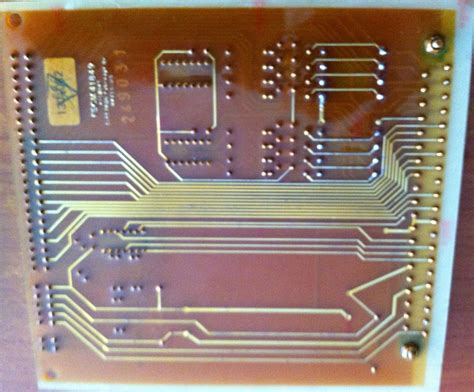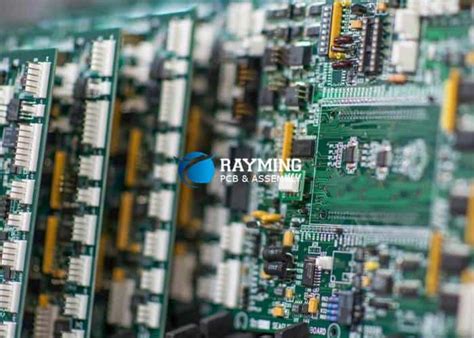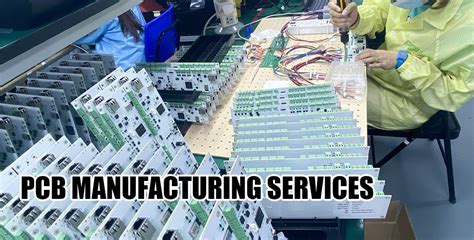PCB Etching Solution: Types, Processes, and Best Practices
Introduction
Printed Circuit Boards (PCBs) are essential components in modern electronics, providing mechanical support and electrical connections for electronic components. One of the critical steps in PCB manufacturing is etching, where unwanted copper is removed from the board to create the desired conductive pathways. The choice of etching solution significantly impacts the quality, precision, and environmental impact of the PCB.
This article explores different types of PCB etching solutions, their chemical properties, advantages, disadvantages, and best practices for achieving optimal results.
1. What is PCB Etching?
PCB etching is the process of selectively removing copper from a laminated board to form conductive traces. The process involves:
- Applying a resist layer (photoresist or toner transfer) to protect desired copper areas.
- Exposing the board to an etchant that dissolves unprotected copper.
- Cleaning and finishing the board to remove residual chemicals.
The effectiveness of etching depends on the etchant’s speed, precision, safety, and environmental impact.
2. Common Types of PCB Etching Solutions
Several chemical solutions are used for PCB etching, each with unique properties.
2.1 Ferric Chloride (FeCl₃)
Composition:
- Ferric chloride dissolved in water (typically 30-42% concentration).
Advantages:
- Effective and widely used for decades.
- Works at room temperature.
- Relatively stable for multiple uses.
Disadvantages:
- Stains surfaces and skin (difficult to clean).
- Corrosive and hazardous to handle.
- Disposal is environmentally problematic (contains heavy metals).
Best Practices:
- Use plastic or glass containers (avoid metal).
- Heat slightly (40-50°C) to speed up etching.
- Neutralize waste with sodium carbonate before disposal.
2.2 Ammonium Persulfate ((NH₄)₂S₂O₈)
Composition:
- A strong oxidizing agent dissolved in water.
Advantages:
- Clear solution, allowing visual monitoring of etching progress.
- Less staining compared to ferric chloride.
- Faster etching at higher temperatures.
Disadvantages:
- Decomposes over time, losing effectiveness.
- Can be unstable if contaminated.
- Requires careful handling (irritant to skin and eyes).
Best Practices:
- Store in a cool, dark place to prolong shelf life.
- Use heated baths (50-60°C) for faster etching.
- Dispose of properly due to oxidizing properties.
2.3 Cupric Chloride (CuCl₂)
Composition:
- Copper(II) chloride in hydrochloric acid (HCl).
Advantages:
- Regenerable (can be reused by bubbling air or adding HCl + H₂O₂).
- Fast etching rate, especially when aerated.
- Cost-effective for industrial use.
Disadvantages:
- Requires hydrochloric acid, which is highly corrosive.
- Produces toxic chlorine gas if mishandled.
- Not ideal for beginners due to chemical hazards.
Best Practices:
- Use in a well-ventilated area or fume hood.
- Regenerate the solution with hydrogen peroxide to extend usability.
- Neutralize before disposal.
2.4 Hydrochloric Acid + Hydrogen Peroxide (HCl + H₂O₂)
Composition:
- Mixture of HCl (hydrochloric acid) and H₂O₂ (hydrogen peroxide).
Advantages:
- Very fast etching (works in minutes).
- Inexpensive and easy to prepare.
- Can be adjusted for different etching speeds.
Disadvantages:
- Highly corrosive and dangerous if mishandled.
- Releases chlorine gas (toxic and irritating).
- Short shelf life (H₂O₂ decomposes quickly).
Best Practices:
- Mix in a well-ventilated area.
- Use fresh H₂O₂ for best results.
- Neutralize with baking soda before disposal.
2.5 Sodium Persulfate (Na₂S₂O₈)
Composition:
- A less hazardous alternative to ammonium persulfate.
Advantages:
- Non-toxic compared to other etchants.
- Clear solution for easy monitoring.
- Works well at elevated temperatures.
Disadvantages:
- Slower than ferric chloride or HCl-based etchants.
- Still requires proper disposal.
Best Practices:
- Heat to 40-50°C for faster etching.
- Avoid contamination with organic materials.
2.6 Citric Acid + Hydrogen Peroxide (Eco-Friendly Etchant)
Composition:
- Citric acid + H₂O₂ + a small amount of salt.
Advantages:
- Non-toxic and environmentally friendly.
- Safe for home use and educational settings.
- No strong fumes or hazardous waste.
Disadvantages:
- Slower than traditional etchants.
- Requires frequent agitation.
Best Practices:
- Heat the solution slightly (30-40°C) to improve speed.
- Stir continuously for even etching.
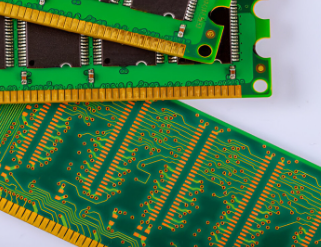
3. Factors Affecting Etching Quality
Several factors influence the effectiveness of PCB etching:
3.1 Temperature
- Higher temperatures increase etching speed but may weaken resist layers.
- Ideal range: 30-50°C (depending on the etchant).
3.2 Agitation
- Stirring or bubbling improves etching uniformity.
- Prevents “undercutting” (where etchant eats beneath the resist).
3.3 Concentration
- Too dilute: Slow etching.
- Too concentrated: May damage resist or over-etch traces.
3.4 Etching Time
- Over-etching thins traces; under-etching leaves unwanted copper.
- Monitor progress closely, especially with fast etchants.
4. Safety and Environmental Considerations
PCB etching involves hazardous chemicals, so proper safety measures are essential:
4.1 Personal Protective Equipment (PPE)
- Gloves (nitrile or rubber).
- Safety goggles.
- Lab coat or apron.
4.2 Ventilation
- Work in a fume hood or well-ventilated area.
- Avoid inhaling fumes (especially from HCl or chlorine-based etchants).
4.3 Waste Disposal
- Neutralize acidic etchants with baking soda or sodium carbonate.
- Follow local regulations for heavy metal disposal (e.g., copper-laden ferric chloride).
4.4 Eco-Friendly Alternatives
- Consider citric acid or sodium persulfate for safer etching.
- Reuse or regenerate etchants (e.g., cupric chloride) to reduce waste.
5. Conclusion
Choosing the right PCB etching solution depends on factors like speed, safety, cost, and environmental impact. Traditional etchants like ferric chloride and cupric chloride are effective but hazardous, while newer alternatives like citric acid + H₂O₂ offer a safer, eco-friendly option.
For best results:
- Control temperature and agitation for uniform etching.
- Use proper safety gear when handling chemicals.
- Dispose of waste responsibly to minimize environmental harm.
By understanding different etching solutions and their properties, PCB manufacturers and hobbyists can achieve high-quality results while maintaining safety and sustainability.

